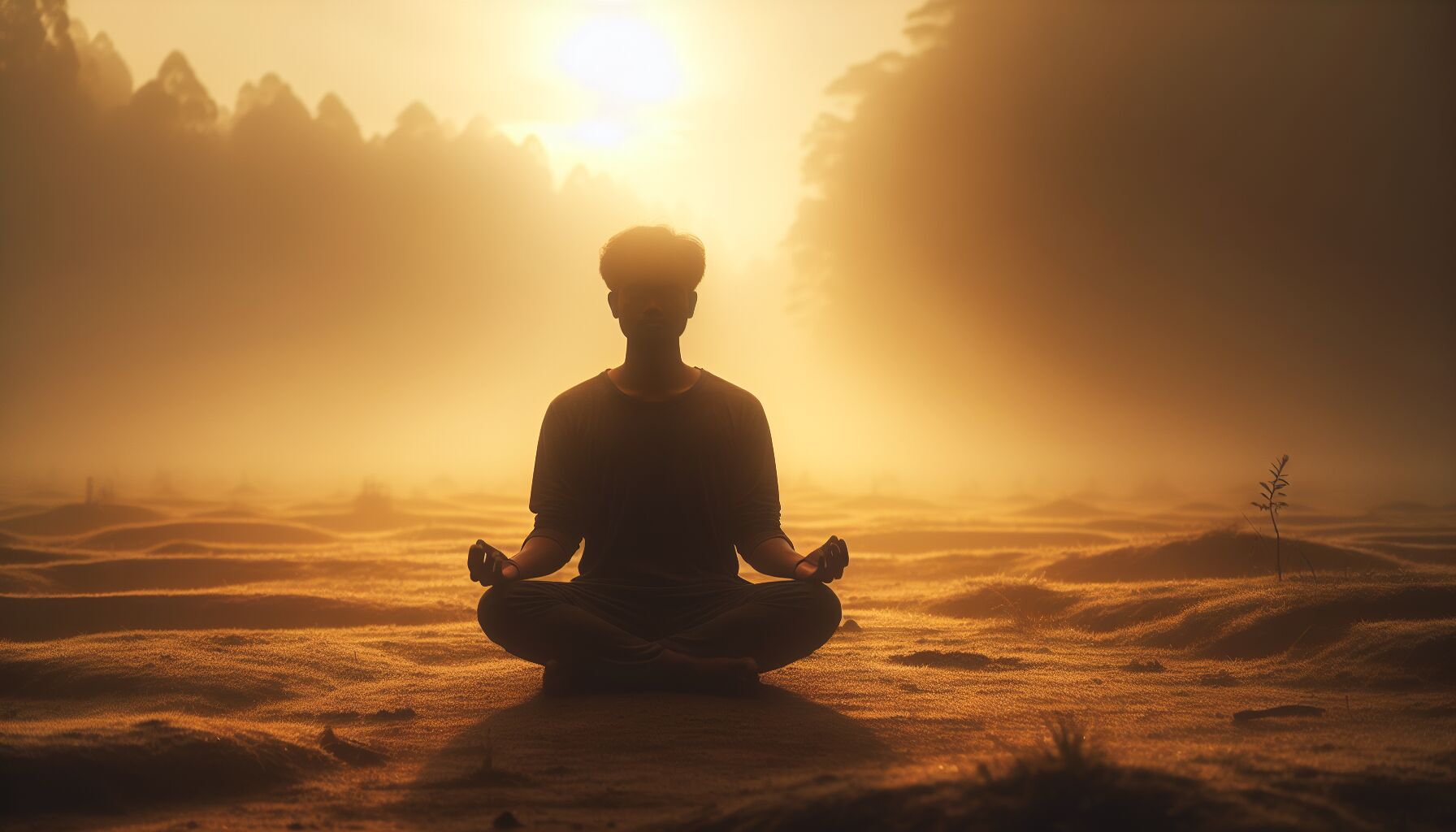 There’s a fine line between solitude and loneliness—one nourishes the soul, while the other can leave it aching. But here’s the thing: being alone doesn’t have to mean feeling lonely. In fact, some of the most profound moments of self-reflection happen when we embrace solitude rather than fear it.
There’s a fine line between solitude and loneliness—one nourishes the soul, while the other can leave it aching. But here’s the thing: being alone doesn’t have to mean feeling lonely. In fact, some of the most profound moments of self-reflection happen when we embrace solitude rather than fear it.
Loneliness is that empty, hollow ache when we crave connection but don’t have it. It’s sitting in a crowded café, surrounded by conversations that don’t include us. It’s scrolling endlessly through social media, watching others live their curated lives. Solitude, on the other hand, is entirely different. It’s stepping away by choice—relishing stillness, feeling the quiet settle around you like a well-worn blanket. When embraced with an open heart, solitude leads to soul growth rather than emotional isolation.
The poet Rainer Maria Rilke once advised, “The only journey is the one within.” That’s the heart of solitude: an intentional pause, a space carved out for self-discovery. It’s where we find clarity, develop inner peace, and come back to ourselves after life’s constant noise pulls us outward. But if solitude is so enriching, why do so many people avoid it?
The problem often lies in conditioning. From childhood, we’re taught that being alone is something to fix. A child playing by themselves is asked, "Why don’t you go play with the others?" An adult dining alone may feel self-conscious, as if independence signals social failure. We’ve internalized the idea that a full life requires constant external connection, but that’s not entirely true. While community and relationships matter, so does the relationship we have with ourselves.
Think of solitude as a garden. If you tend to it—sit with your thoughts, nurture your interests, and allow for some silence—you cultivate something beautiful. Loneliness, by contrast, is a neglected space, overgrown with restlessness and self-doubt. The difference isn’t in whether you’re alone, but in how you engage with that aloneness.
So, how do you tip the scale from loneliness to fulfilling solitude? It starts with shifting perception. Instead of viewing alone time as a void, see it as an opportunity. That morning walk? It’s not just exercise—it’s a moment to notice the way the sun filters through the trees. That evening alone? It’s not dull—it’s a chance to read, reflect, or simply breathe without distractions.
Henry David Thoreau famously withdrew to Walden Pond, reveling in the simplicity of quiet existence. He wrote, “I never found the companion that was so companionable as solitude.” That’s a perspective many of us forget in the age of constant connectivity. We reach for noise, for distraction, for anything that fills space—but what if we didn’t? What if we leaned into the silence and made peace with it?
That’s the foundation of true inner peace—a quiet confidence that solitude isn’t emptiness, but rather a full and expansive space where we reconnect with ourselves.
Practical ways to cultivate fulfilling alone time
There’s a reason creativity often blooms in solitude. Without distractions tugging at our attention, we can finally hear our own thoughts, untangle emotions, and explore what truly excites us. But let’s be honest—spending time alone can feel awkward at first, especially if you’re used to a packed schedule or constant social interaction. The key is learning how to engage with your solitude in a meaningful way, rather than just enduring it.
One simple, yet often overlooked, approach is to actively schedule your alone time as if it’s an important meeting with yourself (because it is). Set aside time for activities that aren’t just passive distractions—watching endless TV episodes or scrolling through your phone won’t necessarily leave you feeling fulfilled. Instead, think about pursuits that spark curiosity, creativity, or self-reflection. Maybe it’s journaling, painting, learning a new instrument, or even just sitting in silence with a cup of tea and observing the world outside your window.
Nature is a great companion for solitude. Walking through a forest, sitting by a lake, or simply watching the clouds drift in the sky can be incredibly grounding. There’s something about nature that recalibrates the mind, allowing thoughts to settle and emotions to breathe. Ralph Waldo Emerson captured this perfectly when he wrote, “Adopt the pace of nature: her secret is patience.” When was the last time you let yourself just observe—no headphones, no podcasts, no distractions—just you and the earth beneath your feet?
Reading is another way to cultivate fulfilling solitude. A good book isn’t just entertainment; it can be a mentor, a travel guide, a philosophical debate partner. Fiction pulls us into richly imagined worlds, while nonfiction can fuel personal growth or introduce entirely new ways of thinking. If you’ve ever put down a book and felt like a slightly different person than when you picked it up, you understand the magic of solitary reading.
And then there’s the art of slowing down—something we often resist. We pack our schedules so tightly that any moment of stillness feels “unproductive.” But what if slowing down is actually the most productive thing we can do for our inner peace? Sitting in silence without an agenda might feel strange at first, but over time, it teaches you to be fully present. You start appreciating small details—how sunlight moves across the room, the rhythm of your own breath, the distant hum of the world moving around you.
Of course, creativity and stillness aren’t the only pathways to fulfilling alone time. Self-reflection can be equally powerful. Instead of pushing through emotions or relying on external input for validation, solitude invites us to sit with our thoughts. This doesn’t mean spiraling into overthinking, but rather checking in with yourself, understanding what you need, and allowing inner peace to grow.
Solitude also creates space for spontaneity. Without external schedules dictating every move, you can follow small whims—baking something from scratch, rearranging your workspace, picking up an old hobby, or even just taking an unexplored route home. These seemingly small moments stitch together a sense of personal freedom, reminding you that solitude isn’t restrictive—it’s expansive.
So really, the secret to fulfilling time alone isn’t about doing nothing. It’s about doing something meaningful—something that nurtures soul growth and deepens your connection with yourself. Time spent alone, when approached with intention, doesn’t feel empty. It feels rich, full of possibility, and—perhaps most importantly—entirely yours.
Spiritual practices to deepen your connection with yourself
 Some moments of solitude feel instinctively peaceful—like sitting in the quiet of early morning, when the world hasn’t quite woken up yet. Others feel restless, as if stillness itself is pressing down, demanding you fill the silence with something, anything. That restlessness is exactly why spiritual practices can be so powerful. They help turn solitude into something nourishing, transforming time alone from an awkward stretch of waiting into a meaningful experience of *being*.
Some moments of solitude feel instinctively peaceful—like sitting in the quiet of early morning, when the world hasn’t quite woken up yet. Others feel restless, as if stillness itself is pressing down, demanding you fill the silence with something, anything. That restlessness is exactly why spiritual practices can be so powerful. They help turn solitude into something nourishing, transforming time alone from an awkward stretch of waiting into a meaningful experience of *being*.
One of the simplest and most profound ways to deepen your connection with yourself is through meditation. Now, before you start picturing monks chanting in distant temples, meditation doesn’t have to be rigid or overly formal. It’s not about forcing yourself into stillness—it’s about *allowing* stillness. Some people sit cross-legged in silence, while others meditate while walking, cooking, or simply breathing with awareness. Thich Nhat Hanh, a beloved Buddhist teacher, captured this beautifully:
“Breathing in, I calm my body. Breathing out, I smile.”
It really can be that simple. A few deep breaths—fully experienced—can shift your mental state entirely. And what’s interesting is that meditation isn’t just about quieting your thoughts; it’s about listening to them with curiosity, without rushing to judge or silence them. In solitude, this practice becomes even more valuable because it allows for a deep, unfiltered kind of *self-reflection*. What’s really on your mind when external voices fade? How do you *actually* feel when given space to just exist?
Journaling is another powerful spiritual practice that turns solitude into an opportunity for *soul growth*. Unlike casual thought, which is often fleeting and jumbled, writing offers a contained space to explore emotions, clarify intentions, and anchor your own truths. The trick is not to overthink it—just write as if you’re talking to an old friend. It doesn’t have to be poetic or profound. Some questions to get started:
– What thoughts have been circling in my mind lately?
– What’s something small that brought me joy in the past week?
– What do I need more (or less) of in my life right now?
And then, there’s gratitude—a deceptively simple shift in perspective that profoundly changes the way solitude feels. When loneliness creeps in, one of the most effective counterbalances is to consciously acknowledge what is *present* rather than what is *absent*. A daily gratitude practice isn’t about toxic positivity; it’s about noticing. Maybe today, it’s the comfort of a favorite song, the feeling of warm tea in your hands, or the beauty of the sky shifting colors at dusk. Over time, this small habit rewires the brain to seek contentment in the quiet.
Spiritual connection doesn’t always have to be inward-facing, either. Engaging with sacred texts, poetry, or philosophical writings can provide perspective when solitude feels heavy. Rumi, the Persian poet and mystic, wrote:
“Be like a tree and let the dead leaves drop.”
A simple line, but one rich with wisdom. It’s a reminder that solitude isn’t about clinging to the noise of what was—it’s about making space for new growth, new understanding. And sometimes, deepening your connection with yourself means releasing what no longer serves you.
Then there’s movement—often overlooked when we think of spiritual practice. But have you ever taken a solitary walk and felt something shift inside you? The rhythm of walking, the cadence of footsteps—there’s something ancient about it, something that grounds you in your body. Whether it’s yoga, mindful stretching, or just letting yourself *dance* in your living room, movement connects you to the present moment in a way words sometimes can’t.
Solitude, when approached with intention, becomes more than just time spent alone. It becomes a path toward *inner peace*, a space where presence deepens and the soul finally has room to breathe. And the most beautiful realization? This connection with yourself is always available. You never *lose* it—you just have to remember to return.
 DS Haven In Light Of Things
DS Haven In Light Of Things






